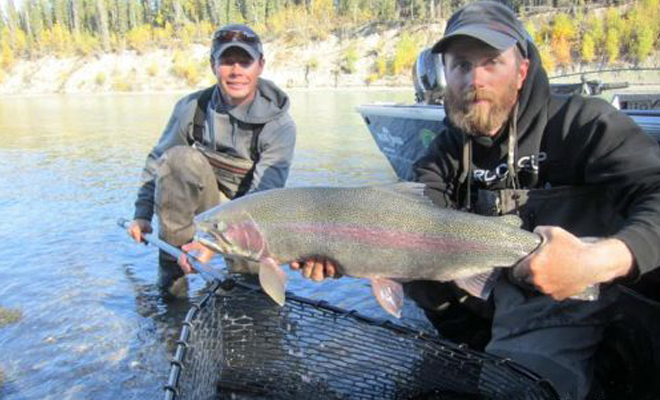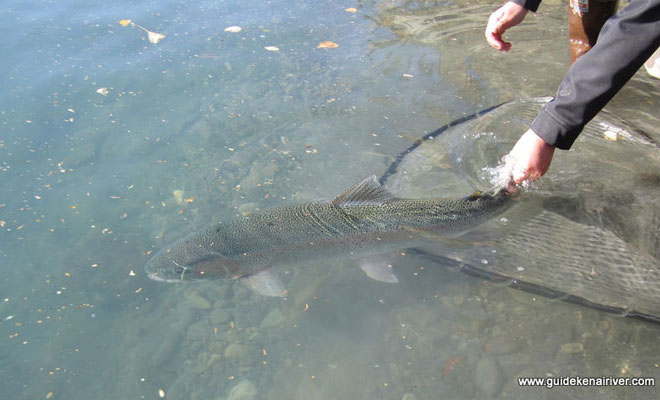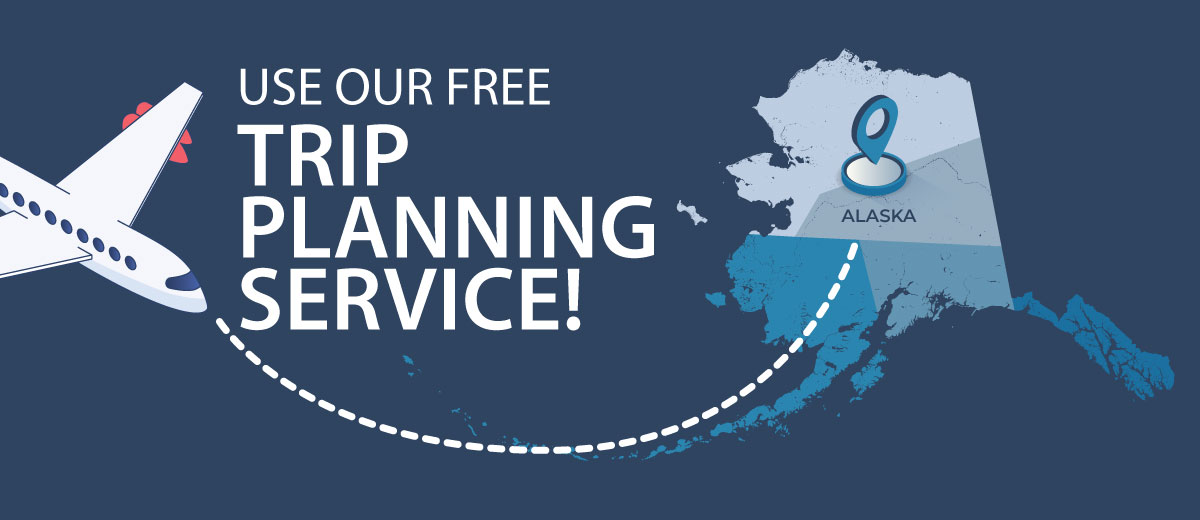 Story By Nick Ohlrich
Story By Nick Ohlrich
There’s no question that pound-for-pound Kenai rainbows, and ’bows in general, are one of the top contenders in the fight circuit, but how do these fish fair during the measuring, photo shoot and release?
There are quite a few considerations to think about, and let’s be honest most anglers are coming to bat with good intentions with ethical catch-and-release strategies, but many practices can be just as detrimental as the guy who just landed a fish in a mesh net using a 3/0 hook.
As a trout guide on the Kenai river I have had many chances to think about and refine my approach to handling trout and doing my best to ensure their safety and mortality; I mean, it’s job security.
The right tools for the job
There are a few mandatory tools that make yours and the trout’s life easier. The first is a rubber net.
Rubber nets do not remove the “slime” from fish; this “slime” protects the fish from infection. If you have ever netted a fish with a nylon net you probably seen slime clinging to the net, and net marks on the body of the fish. That is all fine and well if you are keeping the fish, but for catch-and-release this opens up the door for infection. Rubber nets also hold their shape, making it easier to work on the fish, and this basket gives the fish a safe place to begin recovering from the fight. I use rubber nets for salmon as it makes life easier for me to unhook fish and put them in the fish box quickly vs. playing the untangle rodeo with line, hooks, and fish all wrapped up in a happy mess.
Next is a quick release tool. This tool allows for quick release of fish, especially the ones that you do not want to photo and measure. Netting and unhooking every fish leads to a lot of unnecessary handling of fish, line tangle on the fish and increase in the chance of mortality. This is especially true on the Kenai, where it is very possible to land over 100 fish a day.
When it comes time to measure a fish there are two types of measurements you take; the first is length, followed by girth. Length is best done with a measuring board like the Dunwright. It’s a floating board that allows for easy measuring of length while keeping the fish in the water and safe. This system is huge in the Lower 48 for bass and walleye tournaments. Using a soft tape to measure the length of a fish is hard, which leads to excessive handling and inaccurate measurements. Soft tapes should only be used for measuring girth. The easiest way to find the girth is by wrapping the tape in front of the dorsal fin and around the belly; this is usually the fattest part of the fish.
The big one is in the net, high five, now what?
On big-water systems like the Kenai there are two choices one can make once that photo fish is in the net. First, go to shore; second, float down the river. I like to use both depending on where I’m at.
For the shore option there are several things to think about. First you need to find a place along the shore where the water is moving slow enough so you don’t pin the fish to the side of the net, which suffocates it. Second you need to slowly move to shore so the above-mentioned does not happen while heading to shore. Knowing the river is great, as it allows you to think of a safe place downriver to bring the boat to shore. I see drift boaters doing the hurried fish drag to the shore so they don’t eat up valuable water. For the power boaters, I’m not quite sure what the thinking is, because you have a powerboat.
If your plan is to float with the fish to measure, photo, and release there are still a few points to consider. The big one is never bring a fish across the gunnel of the boat if something goes wrong the fish will flop on the floor of the boat causing damage to the fish, this practice also involves keeping the fish out of the water for more time than is needed. Also, when holding the fish make sure the head is pointed away from the boat in case the fish decides to wiggle it won’t shoot into the boat.
When it comes time to for the release find an area where the water is moving slow; do not dump the fish in the main channel where the water is moving fast, having to fight a strong current while tired will lead to a higher chance of mortality.
Photoshop
Congratulations you just landed a fish that you want to get a photo of; it’s time to celebrate. Celebration is a perfect time for the fish to relax in the net. Elect one person to hold the net and make sure the fish is doing well; a round of high fives is in order; rods need to be packed away so they don’t get stepped on, and a plan is needed for whether the photo shoot will happen in the boat or on shore. During this time the fish is recovering.
For photos three people is ideal, one to hold the net, one to hold the fish and one cameraman. Once everyone is settled and on the same page do a 3-count, i.e., 1,2,3 lift fish, smile and shoot. Immediately put the fish back in the net regardless of the photo quality. It’s 2015, technology is great, so no need to keep the fish out of the water while deciding if the pic is good or not. Burst mode on iPhones is a great feature that allows you to shoot several shots at once. If you need a few more shots repeat this process just make sure you keep the fish in the net for 30 seconds or so before each photo. This ensures proper recuperating time for the fish.
The Release
If you follow the above-mentioned steps the fish should be ready to take off and fight another day. Hold onto the tail of the fish until it swims away on its own. Keeping the fish’s head facing up stream during the release will help cycle oxygen and get them back where they belong faster.
Once again be patient and gentle. Let’s face it the fish would rather be hanging out in it’s happy fishy world than poked by a human for entertainment, so it will take off as soon as it can.
 Tying it together
Tying it together
If you follow these points you will do a tremendous amount of good for the system that you fish, whether it’s trout, salmon or any other species. The biggest thing to take away is to remain calm and clearheaded, which is tough when there is a big fish in the net and the adrenalin is pumping.
Typically when one big one hits more of that size are in the same mindset so you want to get back out and catch more. Very understandable, but please take the time to enjoy the moment as it will lead to proper care of that fish and allow it to remain healthy enough to become someone else’s status update on good-ole Facebook.
Nick Ohlrich is co owner/guide of Alaska Drift Away Fishing. For more information or to book a trip check out our website at guidekenairiver.com or follow us on Facebook


